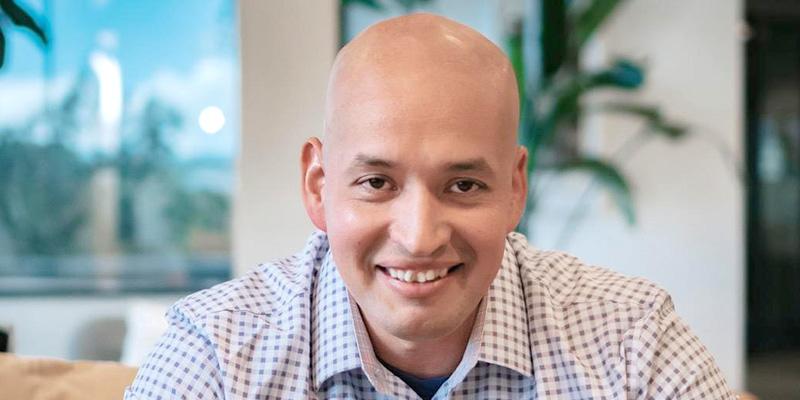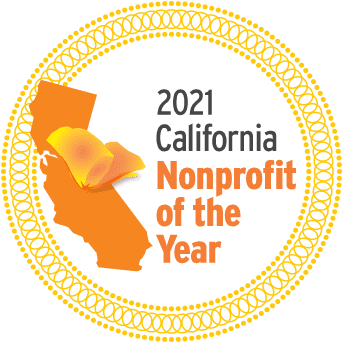Prison college programs, decimated by a ‘94 crime bill, have begun a slow comeback. As more people of color attend classes behind bars, the politics of prison education are once again up for debate.
Ten women are scattered, two to a table, facing the chalkboard, tentatively sharing feedback on last week’s reading assignment: Nietzsche’s conception of aristocratic morality, and its mirror opposite the morality of the slave. The professor resumes his explanation of the text, jiggling chalk in his hand like he’s about to roll a pair of dice. He has a fuzzy, prematurely balding head, and wire-rimmed glasses. He is wearing brown cords, a black flannel button-down, and he has little hoop earrings in both ears.
“Nietzsche talks about his own upbringing, his skepticism towards morality and the origins of the nature of good and evil—”\ A woman with clipped, graying hair and drug-store eyeglasses breaks in. She’s wearing a sweatshirt, jeans, and sneakers. “So, who are ‘the bad’?”
“The weak,” the professor explains, “are at the mercy of the more brave, more courageous, more powerful. So the poor redefine the strong, powerful people as bad. Good becomes evil and bad becomes good. ”
“I dig that,” the woman says, cracking a smile. A few students cough out nervous laughs. And then an almost imperceptible shift occurs. All 10 women loosen their posture, like someone just opened an air valve.
It’s midway through the fall semester for Professor Jeffrey Paris’ philosophy class, and the lofty material—which elsewhere might read pretty dry—has rich layers of meaning for these aging undergraduates, who are under medium security lockdown at the Northern California Women’s Facility (NCWF) in Stockton, California.
For some taxpayers, the very existence of on-site programs like the accredited bachelor’s degree at NCWF is contentious. In fact, prison colleges were all but decimated in 1994 when Congress passed a crime bill eliminating Pell Grants for incarcerated men and women. In the past few years, college
programs have begun a sluggish comeback—primarily at the behest of volunteer professors and grad students, and under the sponsorship of private, religious institutions. Nationally, the only higher education program that ’s still publicly funded is for youthful offenders.
Though it’s a struggle for the private and government sectors to agree on the details, it seems prison colleges will ultimately survive the loss of federal funding. As stricter sentencing laws take hold, more Americans—and disproportionately more men and women of color—will attend school behind bars. Though Hollywood would have us believe otherwise, intellectual discussions are more of an everyday occurence than shower hookups and prison breaks. So the question that remains unsettled, the unspoken question in Professor Paris’ class, is, what is useful and meaningful content for the prison classroom? What should be the goal of a college education for convicted felons who may never be released?
At the men’s program at San Quentin, now in its sixth year, opinions on the matter vary drastically:
“We should be able to talk about whatever we want as long as people aren’t cutting the bars and jumping the walls,” says Rahman, a 50 year-old graduate of the San Quentin program, now in his 22nd consecutive year in custody.
“Keep everybody really, really busy,” Department of Corrections spokesman, Bob Martinez, told the Associated Press in March, 2001.
“If we’re going to run this program it should be like a high-quality liberal arts college that we would want to send our kids to or that we would want to go to ourselves,” says UC Berkeley graduate student, Jody Lewen, the volunteer director of the San Quentin program.
“The point of these programs is to put a lid on things,” says Dylan Rodriguez, an Ethnic Studies professor at UC Riverside, whose doctoral research focused on prison politics. “These education programs allow prisoners just enough space to blow off some steam, but not enough to blow the lid off.”
Radical Beginnings: The Legacy of Attica
The current curriculum debate seems rather tame given the groundbreaking events that brought prison colleges programs into being. The earliest program on record is the University of Maryland at Maryland Penitentiary, established in 1953. The course offerings at Maryland and a handful of other programs that followed were sparse. None of them granted degrees. In 1965, Congress passed the Higher Education Act, allowing inmates access to tuition assistance. But even with this backing, only about 3,000 inmates —less than one percent of the population—had participated in some form of post-secondary education by 1967. Most who did took correspondence courses.
What catalyzed the on-site education movement, what made it a household issue was the uprising at Attica State Prison in New York. On September 9, 1971, Attica inmates, who had been living in squalid conditions, took the prison guards hostage. Their demands included minimum-wage payment for their labor (they were earning 30 cents a day), better medical treatment, more black and Spanish-speaking guards, and access to education. During the standoff, inmate spokesmen invited in doctors and journalists to see their living conditions, assess the health of the hostages, and ultimately broadcast to the world what would transpire in the coming days. After several days of negotiations between inmate leaders and the state government, Governor Nelson Rockefeller ordered in the National Guard. The Guardsmen stormed the gates, discharging 2,200 bullets in nine minutes. When the smoke and tear gas cleared, 29 inmates and 10 prison guards had been killed, all, according to autopsy reports, by gunshot wounds inflicted by the National Guardsmen.
Attica was a watershed for national prison reform. It swayed public opinion towards the notion of a rehabilitative, rather than punitive, function for so-called “correctional institutions.” Attica also awoke prison officials to the fact that with or without institutional support, prisoners would get an education. Long before the uprising, incarcerated intellectuals around the country had begun educating their brothers and sisters on the inside, often about the nuts and bolts of radical liberation struggles. Wardens began to rethink their programming: offering government-sponsored education at all levels became a higher priority.
“The institution of formal college and high school education programs was a direct response to the prison-education circles initiated by inmates,” says Dylan Rodriguez.
A core group of surviving Attica inmates who were transferred to New York’s Green Haven facility set up a “think tank” of self-educated inmate scholars who began teaching younger inmates. The think tank set the groundwork for programs in New York prisons today, like the inmate liaison committee that handles grievances between inmates and officers, and the pre-release center, where inmates are connected with community contacts to help them complete their studies and find jobs on the outside.
In the spirit of inmate educators before them, Al-Jaami and Rahman at San Quentin tutor their peers to this day. “We’ve got grandfathers that have graduated up under us. It’s a beautiful thing when they finally take that step,” Al-Jaami says. “We turn out more GED graduates than the prison,” says Rahman.
In collaboration with prison administrators and community members, the Green Haven think tank set up a four-year bachelor’s program funded by Pell Grants and run through Marist College, a Catholic institution in Poughkeepsie. The first two classes in the inaugural year, 1973, were Economics and Urban Planning. Prison scholars began encouraging their fellow inmates to register for classes.
Lateef Islam, then a 21-year-old inmate at Green Haven, remembers some of the Attica vets convincing him that, although he was a ninth grade dropout, he could handle even the most cerebral topics. “We had teachers coming in who were amazed by the articulation, by the way we thought, by what we had already developed without a formal education,” says Islam.
In The Last Graduation, Barbara Zahm’s documentary about the last degrees conferred under Pell Grants, Professor James Brady sums up the classroom environment he’d become accustomed to at Green Haven: “These guys want to drain every bit of information you have. They see books as full of gold. They ask every question they can ask until the bell rings.”
College Degrees: An Antidote for Recidivism?
In 1987, the Bureau of Prisons documented that the more education an inmate received, the less likely he was to return to prison. More recent studies have also found significantly lower recidivism rates—ranging from 1 to 15.5 percent—for inmates who participated in higher education programs.
Intellectual curiosity and hope cannot be quantified. But James Gilligan, a psychiatrist who directed mental health services in the Massachusetts prison system for many years, believes education is a quantifiable form of violence prevention. In his book, Preventing Violence, Dr. Gilligan writes, “Education is one of the strongest predictors of whether or not a person will be violent.”
Gilligan tracked 200 inmates serving time for violent crimes, including murder, rape, and armed robbery, over a 25-year period to determine which programs in the Massachusetts prisons were most effective in preventing recidivism. College was the only program with a 100-percent success rate: not a single inmate who earned a college degree had been re-incarcerated for a new crime.
For inmates with release dates, Gilligan’s findings bode well. But in California, even straight-A students leave their parole hearings ungratified. Governor Gray Davis has not approved a single prisoner for parole. Jared Sexton, an Ethnic Studies graduate student at UC Berkeley, says he’s teaching men who know they’ll be locked up for a long time. “The desire to have meaningful interactions, to challenge oneself intellectually and academically, wards against the deadening effect of prison. But to think they’re working on developing resumés—preparing themselves for upward mobility and social climbing—is delusional.”
The Price and Color of an Education
At the height of the college renaissance in the ’80s, the penal system could boast a total of 350 programs in 45 states. By the mid- ’90s, there were fewer than 10 programs. In the interim, Senate heavyweight Jesse Helms and his colleagues drummed up an avalanche of tough-on-crime sentiment, leading constituents to believe that by dipping into the Pell coffers, inmates were depleting federal funding earmarked for students on the outside. In reality, all students in need, including inmates who qualified, could land a Pell Grant.
Lateef Islam says the 1994 bill cutting grants ultimately hurt the crime-fearing citizens Helms and company wanted to protect. “The reality is these people are gonna come back out. They want the same opportunities as everyone else, to have a piece of the American pie. The only way they know to do that is by preying on law-abiding citizens. The best argument for college is that it gives them a real opportunity.”
Islam’s own trajectory and those of other Green Haven alums solidly illustrate this point. Upon leaving Green Haven with 15 college credits, Islam completed his degree, began graduate coursework, and joined the Marist faculty as an adjunct professor. He now runs a youth services program. Many former Green Haven inmates work with youth. One is the dean of students at an alternative middle school, another works for IBM. Some are ministers. One man is a physician. A woman Islam knows from another prison program is an attorney in Buffalo. “And you have some guys that don’t have prestigious jobs, but they are employed, raising a family, paying taxes.”
It costs the state 10 times more to incarcerate inmates than to educate them. Forty-eight-year-old Lemonta McBroom, who has spent 25 years in prison, is just two classes shy of a degree at San Quentin. He says that he doesn’t feel beholden to anyone for this privilege. “It’s not like our college education is free, because you have to be incarcerated to get it.”
Educators hoping to revive prison colleges in the post-Pell Grant-era had to hustle supplies and forgo funding. In 1996, Naomi Janowitz, now the chair of religious studies at UC Davis, came to the San Quentin administrators with an idea. Patten College, which had run programs at 13 prisons under Pell Grants, was interested in starting up an Associate of Arts degree. Janowitz said she would find professors and administer the program. The warden at the time told her, “You sure as hell can’t do it with taxpayer money. But if you can make it happen for free, go ahead.”
“Not everybody’s in favor of inmate education,” says Janowitz. She settled on two basic criteria for the San Quentin program, and for the bachelor’s program she later set up at the NCWF: “Nobody can make any money off it and anybody who qualifies should be admitted.”
Since the rise, fall, and resurgence of college programs, the profile of participants has shifted. According to U.S. Census data, 60 percent of prison inmates are African American or Latino; whereas, just 13 percent of college graduates are African American or Latino. Graduate student Sidney Dietz, a Navaho who has taught geometry at both San Quentin and NCWF, says his prison classrooms are always more diverse than classes on the outside. “I’m always proud to have Native students, and I like to think they’re proud of me. But they’re over-represented in prison classrooms.”
According to data from The Sentencing Project, between 1980 and 2001 the population of women in prison increased 654 percent (most recent entrants were incarcerated for non-violent drug offenses). A study at Bedford Hills Correctional Facility showed that the population of women inadequately served by the New York public schools on the outside—low-income African Americans and Latinas—were the same demographic group, ages 17-58, pursuing a college education behind bars.
Prison undergraduates are frequently the first in their families to graduate from college. These inmates are the role models held up for their children and grandchildren struggling with school on the outside.
Ethnic Studies Debate in Prison
A year ago, four students churned up the curriculum debate at San Quentin. Their story offers a glimpse into the bigger question programs must answer. After class one evening, Viet “Mike” Ngo and Eddy Zheng handed a list of the group’s demands to the program director, Jody Lewen. The document urged the college to add an ethnic studies elective and establish an academic advisory committee representing “various cultural, political, and social viewpoints” to determine future electives.
Nothing momentous in the annals of free-world student activism, certainly nothing risky compared with what went down at Attica.
But after word got out to the correctional staff, the men’s cells were searched, correspondence with likeminded TAs was confiscated, and before the close of the semester, the prison had barred the four signatories from all classes and extra-curricular programming, transferred two of them to other prisons, and placed three—all Asian Americans—in solitary confinement where they remain at print time.
Lewen says at the root of the episode was a conflict between academic culture and prison culture. “To be educated is to become a critical thinker and dissent. It’s what you want your students to do. But then they do it, and they get sledgehammered. In prison, all challenges to authority are intrinsically threatening. We follow all kinds of stupid rules because we want [the administration] to trust us. They have no legal obligation to allow our program to run.”
In the midst of the turmoil, Eddy Zheng wrote an editorial for Hardboiled, the Asian/ Pacific American student newspaper at UC Berkeley, about the need for Asian and Asian American studies: “How can Lewen expect me and other prisoners to maximize our potential when she is restricting our freedom to learn and speak freely and treating us as inferiors?”
Antonio Cediel, now a school superintendent in Boston, taught Mexican history and twentieth century U.S. history at San Quentin. He remembers Sean McPhetridge, then-director of the college for the Department of Corrections, informing him of curriculum materials he couldn’t bring in: “Stuff to do with the Panthers, the Native American movement, the Crow Dog memoir. I felt a little frustrated, but I understood the political tightrope that was being walked to keep the program going.”
The tightrope walk is more perilous from the student perspective. “When I started in ’98, we were really at liberty to discuss the topics we wanted to discuss,” says Al-Jaami, a San Quentin graduate. “But in the back of my mind I knew at any given time a person could be called in or taken to account for any paper they wrote.”
Class Dismissed
The buildings at NCWF are clustered around a pockmarked lawn. Day and night gophers and rabbits hop through several concentric fences onto the lawn and scuttle out again.
For professors new to the arrangement, teaching behind bars is an adjustment
“I’m pretty present in terms of the fact that this is a prison. How can you sit in a room of 10 or 12 people who are being punished without talking about the reality of the fact?” says Jeffrey Paris. ‘On the other hand, it’s not a class about prison education—it’s about college-level philosophy.”
Down the hall from Professor Paris, Professor Cayce Dumont’s English class is wrapping up for the night. Dumont explains the assignment: “Write a persuasive essay, based on personal experience, about the purpose of prison. Which system of punishment is best? Deterrence? Incapacitation? Rehabilitation?” The students jot down some final notes.
“OK, we’re done. You can go now,” Dumont says.
A few students get up. A bulky woman with a mullet, who’s been vocal in class, slumps back in her chair, twirling a pencil through her fingers.
“They don’t ever want to leave,” the professor tells the visiting reporter.
No, we don’t,” the prisoner answers.
Attribution: This originally appeared on ColorLines on March 15, 2003. Read Story
Please note that the Prison University Project became Mount Tamalpais College in September 2020.











